#ColdChainLogistics
Explore tagged Tumblr posts
Text
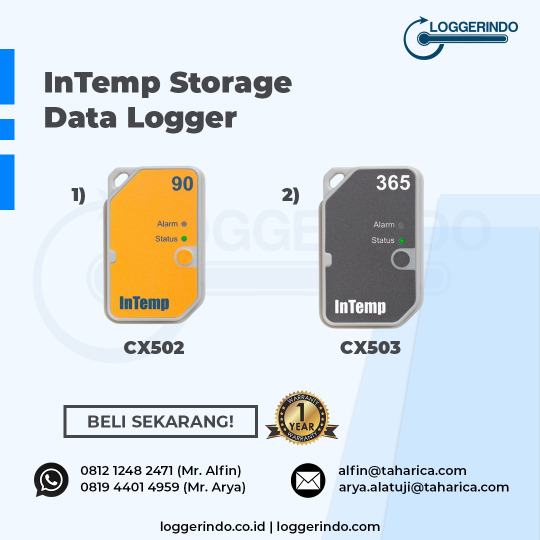

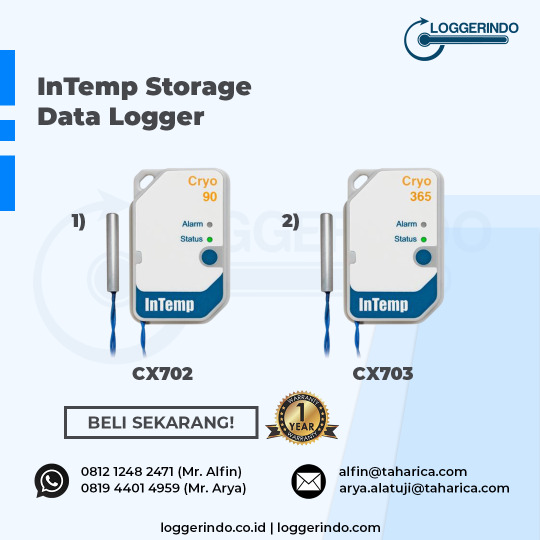
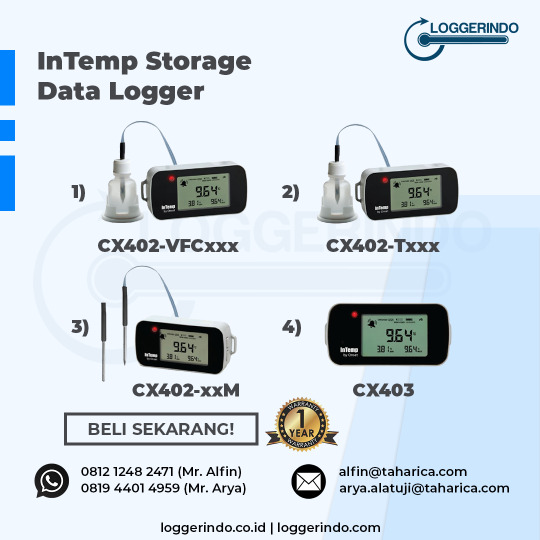
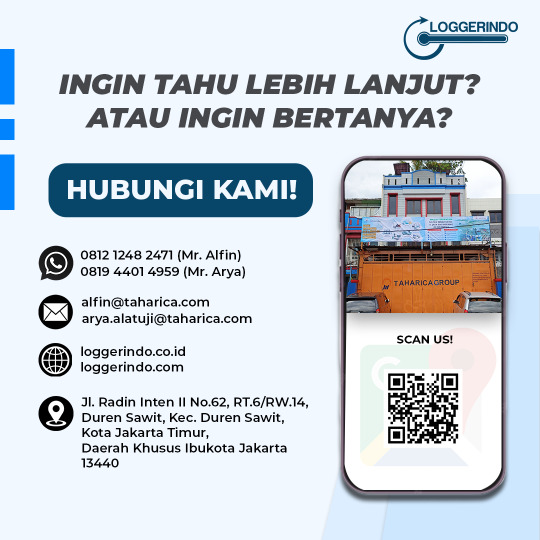
InTemp Storage Data Logger . Temukan variasi Storage Data Logger yang sesuai dengan kebutuhan anda disini! . . Ingin tau lebih lanjut? atau ingin bertanya? Silahkan hubungi kami melalui : -Whatsapp : 0812 1248 2471 (Mr. Alfin) / 0819 4401 4959 (Mr. Arya) -Email : [email protected] / [email protected] -Website : loggerindo.co.id / loggerindo.com
#coldchain#coldchainvaksin#coldchaindatalogger#coldchainmanagement#coldchainlogistics#distribusi#logistik#gudang#penyimpanangudang
#coldchain#coldchainvaksin#coldchaindatalogger#coldchainmanagement#coldchainlogistics#distribusi#logistik#gudang#penyimpanangudang
2 notes
·
View notes
Text
Cold Chain Packaging Market Poised for Transformation with Emerging Technologies and Eco-Friendly Materials
The cold chain packaging market is experiencing robust growth as industries demand more efficient and reliable temperature-sensitive logistics solutions. Cold chain packaging refers to systems and materials used to maintain a consistent low-temperature range for perishable products during storage and transportation. It plays a pivotal role in preserving the integrity of products such as pharmaceuticals, food and beverages, chemicals, and biological samples.

Rising Demand in Key Industries
The primary driver behind the growth of the cold chain packaging market is the increasing global demand for temperature-controlled pharmaceuticals and biologics. With the rise in chronic diseases and the expansion of biopharmaceuticals, there is a pressing need for secure and reliable cold chain systems to maintain product efficacy and safety. The COVID-19 pandemic further amplified this need, showcasing the importance of efficient cold chain logistics in vaccine distribution.
In the food and beverage industry, globalization of trade and shifting consumer preferences toward fresh and organic products have necessitated high-performance cold chain packaging. Perishable foods like dairy, meat, seafood, and frozen goods require stable temperature environments to prevent spoilage, maintain quality, and comply with stringent food safety regulations.
Innovation in Packaging Materials and Technology
Technological advancements are playing a crucial role in the evolution of cold chain packaging. The development of phase change materials (PCMs), vacuum insulated panels (VIPs), and smart packaging with temperature indicators and GPS tracking have revolutionized the way sensitive goods are stored and transported. These technologies help companies monitor temperature in real-time and mitigate risks during transit, ensuring product safety and reducing losses.
Sustainable and reusable cold chain packaging solutions are also gaining traction. With increasing environmental concerns and regulations on plastic use, companies are adopting eco-friendly packaging materials made from recycled content or biodegradable polymers. Reusable insulated containers, along with active and passive refrigeration systems, are becoming standard in many cold chain operations to minimize waste and optimize cost-efficiency.
Market Segmentation and Regional Insights
The cold chain packaging market can be segmented by product type, material, application, and geography. Popular product types include insulated containers and boxes, refrigerants (such as gel packs and dry ice), labels, and temperature monitoring devices. Materials used range from polystyrene foam and polyurethane to corrugated fiberboard and advanced insulation films.
Geographically, North America holds a significant share of the market due to its established pharmaceutical and processed food industries, along with a strong regulatory framework. Europe follows closely, driven by stringent quality and safety standards. However, the Asia-Pacific region is projected to grow at the highest CAGR, owing to rising healthcare investments, increasing food exports, and expanding cold storage infrastructure in countries like China and India.
Challenges and Opportunities
Despite the promising outlook, the cold chain packaging market faces several challenges. High initial investment and maintenance costs for temperature-controlled packaging systems can deter small and medium-sized enterprises. Inconsistent infrastructure in developing economies, along with varying regulations across regions, also hinders market expansion.
However, these challenges present opportunities for innovation and collaboration. Companies are investing in R&D to develop low-cost, high-efficiency packaging alternatives. Partnerships between packaging manufacturers, logistics providers, and technology firms are creating integrated cold chain ecosystems. Furthermore, digitalization and automation are enhancing traceability and compliance, thereby improving overall supply chain efficiency.
Future Outlook
The future of the cold chain packaging market looks promising, with projections indicating consistent growth through 2030. Increasing globalization, urbanization, and online grocery and pharmaceutical deliveries are expected to further drive demand. As companies strive to meet regulatory compliance, reduce waste, and improve sustainability, innovation in materials and smart packaging technologies will remain at the forefront.
Emerging trends such as blockchain for enhanced traceability, AI for demand forecasting, and the use of IoT sensors for real-time monitoring will likely shape the next generation of cold chain packaging. Governments and private sector players must work collaboratively to strengthen infrastructure and standardize practices globally.
In summary, the cold chain packaging market is evolving rapidly in response to changing industry needs, consumer expectations, and environmental concerns. By embracing technological advancements and sustainable practices, the industry is set to meet the growing demand for safe and efficient cold chain logistics worldwide.
#ColdChain#ColdChainPackaging#ColdChainLogistics#TemperatureControlled#PharmaLogistics#FoodLogistics
0 notes
Text
Time Temperature Indicator Labels Market Future Trends Driven by Food Safety and Cold Chain Expansion
The time temperature indicator (TTI) labels market is witnessing transformative growth, fueled by heightened awareness around food safety, pharmaceutical integrity, and cold chain reliability. These smart labeling solutions, designed to monitor and visually communicate exposure to temperature over time, are gaining traction as critical components in ensuring product quality and safety from production to consumption.

With the global movement toward more traceable and accountable supply chains, TTIs are evolving from basic indicators to sophisticated tools integrated with digital platforms. As a result, the market is on the cusp of numerous exciting trends that will redefine its scope, utility, and technological sophistication over the coming years.
Rising Adoption Across Cold Chain Applications
Cold chain logistics—especially for food, beverages, and pharmaceuticals—has emerged as a major driver of TTI label demand. Ensuring that temperature-sensitive products maintain optimal storage conditions from production facilities to end consumers is vital for health, compliance, and brand reputation. TTIs are increasingly being employed across frozen foods, dairy, seafood, vaccines, biologics, and other perishable items to maintain quality assurance throughout the chain.
The future will likely see an increased preference for TTIs with broader temperature sensitivity ranges, multi-threshold indicators, and clear, irreversible visual cues. Businesses are also showing interest in bulk implementation to cover secondary and tertiary packaging layers.
Integration With Smart Packaging Technologies
One of the most prominent future trends is the integration of TTIs with broader smart packaging solutions. As the Internet of Things (IoT) continues to penetrate logistics and retail, TTIs are being embedded with digital sensors and QR codes for real-time data capture and sharing.
Smart TTIs that can communicate directly with mobile apps or centralized monitoring systems are beginning to replace passive indicators. These labels not only show visual color changes but also log data that can be analyzed for inventory management, quality control, and predictive analytics. This integration offers transparency, faster decision-making, and greater control over supply chain variables.
Demand From E-Commerce and Direct-to-Consumer Models
With the rise of online food delivery and direct-to-consumer pharmaceutical services, TTIs are becoming more essential in smaller packaging formats. Consumers are now more aware of freshness indicators and often demand proof of proper handling during transit.
TTI labels are expected to play a bigger role in boosting consumer trust in online food platforms, meal kits, and prescription deliveries. Companies that include these indicators on packaging enhance perceived value and demonstrate their commitment to safety and transparency, creating competitive differentiation in the market.
Innovation in Label Materials and Printing Techniques
As sustainability becomes a growing concern, future TTI development will also focus on eco-friendly materials, non-toxic indicator inks, and recyclable adhesives. Biodegradable substrates and compostable labels are in demand, especially among companies pursuing green certification and reducing packaging waste.
Innovative printing technologies like inkjet and roll-to-roll digital printing are being explored to reduce costs and enhance the scalability of TTI labels. This evolution in production methods also enables greater customization, allowing companies to design TTI labels suited for specific use-cases and branding needs.
Expansion Into Emerging Markets
As cold chain infrastructure improves in emerging economies such as India, Brazil, and Southeast Asia, the demand for TTIs is expected to surge. Governments and regulatory agencies are tightening food and pharma handling laws, encouraging local businesses to adopt TTIs for compliance and export-readiness.
The future will likely see wider adoption across local meat markets, dairy cooperatives, vaccine storage facilities, and agricultural exporters in these regions. Local manufacturing of TTIs in these markets will also help reduce costs and increase penetration.
Regulatory Influence and Compliance Standards
Global food and drug regulatory bodies such as the FDA, EFSA, and WHO are increasingly encouraging or mandating the use of time temperature monitoring tools. TTIs are being viewed as crucial evidence in compliance audits, recalls, and quality assurance practices.
In the coming years, expect TTIs to become standard in packaging across high-risk products. As new legislation emerges focusing on traceability and consumer protection, more companies will proactively integrate TTIs into their packaging processes to stay ahead of regulatory requirements.
Personalized and Customizable Indicator Solutions
As industries diversify, the need for customizable TTI labels will increase. Companies are requesting indicators tuned to specific time-temperature thresholds that reflect the perishability and stability of individual products. For example, the temperature tolerance of a fresh salad kit differs significantly from a vial of insulin.
Label providers that offer personalization options, on-demand printing, and integration with digital platforms will gain a significant edge in the evolving market. This shift towards tailored solutions will define the next wave of innovation in the TTI space.
Enhanced Focus on Consumer Awareness
Consumer education about freshness and safety indicators is expected to grow, further influencing demand for TTIs in retail packaging. Packaging that visibly shows freshness status builds brand trust and enhances product appeal. As shoppers become more informed, TTI-labeled products will increasingly become a deciding factor at the point of sale.
Brands that actively promote their use of TTIs in marketing campaigns are likely to strengthen their value proposition, especially in health-conscious and premium product segments.
Conclusion
The future of the time temperature indicator labels market lies in its adaptability, integration with digital ecosystems, and alignment with global safety standards. As cold chains grow more complex and consumers demand greater transparency, TTIs will evolve into intelligent tools offering insights beyond simple temperature tracking. Players in this space who innovate in technology, sustainability, and user experience are poised to lead the next phase of growth in this essential and rapidly expanding market.
#TimeTemperatureIndicatorsMarket#SmartPackaging#ColdChainLogistics#FoodSafetySolutions#PharmaPackaging
0 notes
Text
Navigating refrigerated transport in Sydney? This case study reveals what food startups must know about cold chain logistics, from temperature control to choosing the right courier, to ensure product integrity and business success. Read more
#coldstorage#refrigeratedtransport#coldchainlogistics#temperaturecontrol#dardania logistics#foodlogistics#foodstoragesolutions
0 notes
Text
Liquid Nitrogen Market to Surge with Increasing Industrial Demand
Liquid nitrogen, a cryogenic fluid with a boiling point of –196 °C, plays a pivotal role across diverse industries by offering rapid freezing, inert environments, and efficient cooling solutions. Its application spans from cryopreservation of biological samples in healthcare and pharmaceuticals to quick-freezing of food products in the food and beverage sector. The semiconductor and electronics industries rely on liquid nitrogen for wafer cleaning and temperature control during manufacturing, while metal fabrication benefits from stress relief and shrink fitting.
Get More Insights on Liquid Nitrogen Market https://www.patreon.com/posts/liquid-nitrogen-130581855

#LiquidNitrogenMarket#CryogenicFluids#ColdChainLogistics#SemiconductorCooling#PharmaceuticalCryopreservation#CoherentMarketInsights
0 notes
Text
Achieve Global Food Safety Standards with ISO 22000 Certification in Bahrain

In today’s food industry, safety and hygiene are non-negotiable. Consumers demand transparency, quality, and trust in every bite — and regulators are enforcing stricter compliance requirements. For food businesses in Manama and across Manama, ISO 22000 Certification in Manama is the benchmark standard for food safety excellence.
What is ISO 22000? ISO 22000 is an internationally accepted Food Safety Management System (FSMS) standard that outlines how businesses should identify and control food safety hazards. It integrates core HACCP principles with a proactive risk-based approach and ISO management system practices.
Key Benefits of ISO 22000 Certification in Manama:
Ensures safe food handling, processing, packaging, and delivery
Helps meet local and global food safety regulations and export standards
Improves supply chain traceability and transparency
Reduces risk of recalls, contamination, and legal issues
Builds consumer trust and enhances brand credibility
Drives continuous improvement and operational efficiency
Opens doors to international markets and certifications
Why Manama-Based Businesses Should Prioritize ISO 22000 Manama, as Manama’s commercial hub, plays a central role in the country’s food supply and distribution networks. Whether you’re operating a catering service, processing facility, cold storage, or retail outlet — aligning with ISO 22000 helps you minimize risks while maximizing market trust.
Role of ISO 22000 Consultants in Manama Implementing ISO 22000 requires technical knowledge of food safety practices, regulatory compliance, and system documentation. That’s where expert ISO 22000 Consultants in Manama can make a significant impact.
What ISO 22000 Consultants Offer:
Perform an initial gap analysis against ISO 22000 requirements
Customize FSMS documentation, including food safety policies and HACCP plans
Conduct employee training in hygiene and safety protocols
Assist with internal audits and pre-certification readiness
Monitor FSMS effectiveness and drive ongoing improvements
Industries That Benefit from ISO 22000:
Food manufacturing and packaging
Restaurants and catering services
Supermarkets and grocery chains
Cold chain logistics and warehousing
Exporters of food and agricultural products
With increasing scrutiny on food quality and safety, ISO 22000 is not just a certificate — it’s a strategic asset for your business. It demonstrates your commitment to delivering safe, high-quality food, while protecting your customers and your reputation.
Choose the Right Consulting Partner Qualitcert’s team of experienced ISO 22000 Consultants in Manama has a strong track record of helping organizations implement food safety systems that are both practical and audit-ready. Their tailored approach ensures that your FSMS is aligned with your operations, risks, and goals.
Food safety is the foundation of trust in the food industry. Start your ISO 22000 journey today to ensure compliance, gain market recognition, and build a safer future for your brand. Contact Us
For expert guidance get in touch with us:
Website: www.qualitcert.com
Email: [email protected]
Phone: +91 9686433300
#ISO22000#FoodSafety#FoodSafetyManagement#ISO22000Bahrain#ISO22000Certification#ISO22000Consultants#Qualitcert#FSMS#ManamaFoodIndustry#HACCP#FoodHygiene#SafeFoodPractices#FoodRegulations#FoodCompliance#ISOStandards#FoodProcessing#FoodPackaging#ColdChainLogistics#ExportStandards#FoodTrust
0 notes
Text
Market Dynamics of Cold Chain: Analyzing Current Size, Share, Growth Trends
The cold chain market is driven by the stringent government regulations imposed on production and supply chains, owing to the increasing number of food safety and pharma counterfeit incidents. Governments, across the globe, have stated various regulations and guidelines for storage and transportation of refrigerated products. For instance, in November 2013, the European Union passed guidelines on good distribution practices for medical products used on humans.

To ensure safety and quality of the food products the service providers are engaged in vertical integration with the customers. The lack of cold chain facilities in developing economies leads retailers to heavily invest in developing their own cold chain logistics systems.
Global Cold Chain Alliance (GCCA), a non-profit organization headquartered in the U.S., is a platform that enables networking, communication, and education in all the sectors of a cold chain. The core partners of GCCA include International Association of Refrigerated Warehouse, International Association of Cold Storage Construction, and International Refrigerated Transportation Association.
Companies utilize cold chain services to minimize supply chain risks. The advent of cloud technology is expected to spur the IT spending over the projected period. Additionally, the cloud solution reduces the total cost of ownership and improves the logistics performances.
According, to the Food and Agriculture Organization (FAO), annually 1.6 billion tons of food products are wasted, owing to the lack of adequate temperature management systems. To overcome such problems organizations have increased their spending on technologies such as smart refrigerator systems and cloud computing solutions which increased the demand for the monitoring components market.
The increasing need for enhanced connectivity and emergence of IoT solutions is anticipated to further increase the IT spending on cold chain. An organization implementing IT solutions is mandated to adhere to the IT security guidelines of the National Institute of Standards and Technology and other regulations framed by government organizations including the U.S. Food and Drug Administration, WHO, and the EU regulation for food and drug safety. The growing installation of sensors and smart connected devices in refrigerated containers provides real-time information. The key vendors of the market include Accenture PLC (U.S.), AT&T, Inc. (U.S.), Cisco Systems, Inc. (U.S.), and Oracle Corporation (U.S.).
Government across regions are taking initiatives to attract the investment in cold chain infrastructure. For instance, the Indian Ministry of food processing industries implemented central sector scheme of cold chain. The scheme provides financial assistance for setting up the integrated cold chain infrastructure to avoid post-harvest losses.
The adoption telematics system would help the companies to reduce the fuel expenses and number of empty of runs. Increasing government investments in intelligent transportation system and implementing telematics regulations to enable smart traffic management is anticipated to spur the telematics application in fleet management.
North American region is showing highest penetration growth in the cold chain market owing to the prevailing large consumer based and increasing penetration of connected devices are the major factors driving the North American regional market. The industry players are likely to target the emerging economies such as India, Brazil owing to the government initiatives such as digital India, introduction of GST.
#ColdChain#ColdChainLogistics#SupplyChain#TemperatureControlledLogistics#Logistics#PerishableGoods#RefrigeratedTransport
0 notes
Text
PUR Shippers Market Outlook: Projected Growth Driven by Rising Demand for Temperature-Sensitive Shipping Solutions
The PUR Shippers Market is experiencing dynamic growth fueled by the rising need for reliable, temperature-sensitive shipping solutions. PUR (Polyurethane) shippers offer superior thermal insulation and are widely used in the transportation of pharmaceuticals, perishable foods, and biotech products. As global supply chains expand and the cold chain logistics sector evolves, the demand for efficient, eco-friendly, and cost-effective temperature control packaging is increasing steadily.

Introduction to PUR Shippers and Their Market Significance
PUR shippers are specialized packaging solutions designed to maintain stable internal temperatures during transportation. Made primarily from polyurethane foam, these shippers provide excellent thermal insulation, protecting sensitive products from temperature fluctuations. This characteristic is crucial for industries such as pharmaceuticals and food, where product integrity can be compromised by exposure to incorrect temperatures.
The increasing complexity of global supply chains, alongside the expansion of sectors requiring cold chain logistics, has positioned PUR shippers as indispensable components in temperature-sensitive shipping solutions. This market outlook explores key factors driving growth, challenges, and future opportunities within the PUR shippers market.
Market Drivers Fueling Demand for PUR Shippers
Rising Pharmaceutical and Biotech Industry Needs
One of the primary drivers of the PUR shippers market is the booming pharmaceutical and biotech industries. With a surge in biologics, vaccines, and temperature-sensitive drugs, the need for reliable shipping solutions has never been greater. PUR shippers help maintain the stringent temperature ranges necessary to ensure drug efficacy and patient safety during transportation.
Growing Demand for Temperature-Sensitive Food Shipping
Consumers’ demand for fresh, organic, and high-quality food products is expanding globally. As a result, the cold chain logistics sector supporting fresh seafood, dairy, meat, and fruits and vegetables has witnessed accelerated growth. PUR shippers offer a reliable packaging option that prevents spoilage and extends shelf life during transit, driving their adoption in food supply chains.
Environmental Sustainability and Regulatory Compliance
Environmental concerns and stricter regulations are pushing companies toward eco-friendly and recyclable packaging solutions. PUR foam shippers, often recyclable or reusable, help companies reduce carbon footprints and comply with environmental standards, making them a preferred choice in temperature-sensitive shipping.
Technological Innovations and Market Trends
Enhanced Insulation Technologies
Advancements in polyurethane foam technology have led to the development of PUR shippers with improved thermal efficiency. Innovations such as higher-density foam and multilayer insulation coatings are extending the duration that products can remain within specified temperature ranges, thereby expanding shipping distances and durations.
Integration with Smart Packaging
The incorporation of smart packaging technologies, such as temperature sensors and RFID tags, is becoming a significant trend. These integrations enable real-time monitoring of product conditions during transit, improving supply chain visibility and ensuring compliance with regulatory standards.
Customization and Versatility
Market players are focusing on customizing PUR shippers to meet specific client requirements. This includes varied sizes, shapes, and insulation levels to cater to diverse product types, shipment durations, and climatic conditions. Such customization enhances product safety and customer satisfaction.
Challenges Impacting Market Growth
High Initial Costs
Despite their advantages, PUR shippers often have higher upfront costs compared to conventional packaging materials. This cost factor can be a barrier, especially for small and medium enterprises, limiting widespread adoption in some regions.
Disposal and Environmental Concerns
While PUR foam offers insulation benefits, improper disposal can cause environmental harm due to its non-biodegradable nature. The market faces increasing pressure to innovate in recyclable or biodegradable PUR materials to address these environmental concerns.
Supply Chain Disruptions
Global supply chain interruptions caused by geopolitical tensions, pandemics, or raw material shortages can affect the availability and pricing of PUR shippers. Companies must develop resilient procurement strategies to mitigate such risks.
Future Market Opportunities and Outlook
Expansion in Emerging Markets
Emerging economies in Asia-Pacific, Latin America, and Africa are expected to become key growth regions. Increasing pharmaceutical manufacturing, growing e-commerce in food products, and expanding cold chain infrastructure provide ample opportunities for PUR shipper manufacturers.
Growth in Biologics and Vaccine Distribution
The global focus on vaccine distribution, especially post-pandemic, is anticipated to drive long-term demand for high-performance temperature-controlled shipping solutions like PUR shippers. The expansion of biologics and personalized medicine markets further supports this growth trajectory.
Development of Sustainable Materials
Research and development efforts aimed at producing recyclable, biodegradable, or reusable PUR foam are set to transform the market landscape. Sustainable innovations will likely attract environmentally conscious buyers and comply with tightening regulations worldwide.
Conclusion
The PUR shippers market outlook remains optimistic, underpinned by growing demand for temperature-sensitive shipping solutions across multiple sectors. Key drivers such as pharmaceutical expansion, food industry growth, and sustainability concerns are propelling the market forward. However, addressing challenges related to cost, disposal, and supply chain stability will be crucial for sustained growth. Innovations in insulation technology and smart packaging, coupled with emerging market penetration, are expected to shape the future of the PUR shippers market.
#PURShippers#ColdChainLogistics#TemperatureSensitiveShipping#PharmaceuticalPackaging#FoodShippingSolutions#SustainablePackaging#BiotechLogistics#SupplyChainInnovation#MarketOutlook#PackagingTechnology
0 notes
Text
Chiller Truck for Rent in Dubai – Keep It Cool with Our Expert Transport Services
When it comes to transporting perishable goods, pharmaceuticals, or frozen items, temperature control is crucial. That’s why our chiller truck for rent in Dubai is the go-to solution for businesses that need efficiency, reliability, and top-notch cooling systems.
Whether you're a catering company, supermarket, or logistics provider, our chiller trucks are maintained to meet the highest industry standards. We offer short-term and long-term chiller truck rental services, allowing you to deliver fresh and frozen products without compromise.
At Pink Pepper Services, we understand that different clients have different cooling requirements. That’s why our fleet includes both chiller and refrigerated trucks for rent. Our units support temperature ranges suitable for frozen foods, dairy products, fresh produce, meat, pharmaceuticals, and beverages.
Need a refrigerated truck for rent urgently? We offer quick bookings and 24/7 availability for your convenience. Our vehicles are equipped with advanced refrigeration systems to maintain optimal temperatures throughout the journey.
✅ Why Choose Our Chiller Truck Rental in Dubai?
Temperature-controlled vehicles (from -18°C to +5°C)
Flexible rental durations – daily, weekly, monthly
GPS tracking for real-time monitoring
Well-maintained and sanitized fleet
24/7 support and emergency dispatch
Whether you're delivering during the peak heat of summer or managing a long-distance shipment across the UAE, our chiller trucks for rent ensure your goods arrive fresh, safe, and on time.
Book your chiller truck today and let us handle the cold chain logistics for you. Our services are trusted by restaurants, florists, event planners, and food distributors across Dubai.
#ChillerTruckForRent#ChillerTruckDubai#ChillerTruckRental#RefrigeratedTruckForRent#ColdChainLogistics#RefrigeratedTransportDubai#DubaiLogistics#ChillerVehicleRental#PinkPepperServices#ColdStorageTransport
0 notes
Text
Refrigerated Trailer Rental Market Poised for Growth as Cold Chain Logistics Demand Intensifies Globally
As global supply chains continue to evolve in the face of shifting consumer demands and environmental challenges, the refrigerated trailer rental market is experiencing notable growth and transformation. These temperature-controlled trailers vital for transporting perishable goods such as food, pharmaceuticals, and floral products have become essential tools in ensuring cold chain integrity across industries. Rental services, in particular, are gaining traction due to their flexibility, cost-efficiency, and ability to support dynamic logistical needs.
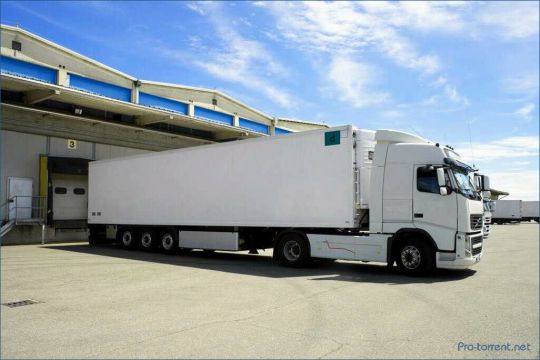
Market Growth Driven by Evolving Consumer Habits
One of the primary forces fueling the refrigerated trailer rental market is the surge in demand for fresh and frozen food products, spurred by changes in consumer lifestyles. The rise of e-commerce and online grocery shopping amplified during and after the COVID-19 pandemic has created a need for reliable and scalable cold chain logistics. Retailers and logistics providers, responding to spikes in short-term demand, are increasingly opting for rental solutions rather than investing in owned fleets, which involve substantial capital expenditure and maintenance costs.
Additionally, the global pharmaceutical sector’s expansion especially in vaccine distribution and biotechnology is contributing to demand for precise temperature-controlled transportation. Pharmaceutical companies often require specialized trailers that can maintain specific temperature ranges, sometimes as low as -70°C. Rental companies have responded by offering diverse trailer options that meet these rigorous standards, providing essential flexibility for the healthcare supply chain.
Flexibility and Cost Control as Key Market Drivers
Flexibility is perhaps the most significant advantage of refrigerated trailer rentals. Companies with seasonal spikes in activity such as agriculture businesses during harvest or food distributors during holiday seasons can scale their fleets up or down without the long-term commitment of ownership. Rentals also allow companies to test new distribution routes or expand into new markets without the risk of underutilized assets.
From a financial perspective, refrigerated trailer rental mitigates large capital investments, particularly for small and medium enterprises (SMEs) or startups. With rentals, companies can access modern, fuel-efficient trailers with the latest temperature-monitoring technology while preserving working capital for core operations.
Technology Enhancing Fleet Performance
Another critical aspect shaping the market is the integration of advanced technologies in refrigerated trailers. Modern units often feature telematics systems that allow for real-time temperature monitoring, geofencing, route optimization, and predictive maintenance alerts. These innovations help minimize spoilage, reduce fuel consumption, and ensure compliance with strict food safety and pharmaceutical transport regulations.
For rental providers, offering trailers equipped with such technologies is becoming a competitive differentiator. Clients are increasingly seeking data-driven insights and enhanced visibility into their cold chain operations, making smart trailers a valuable offering in the rental market.
Regional Insights and Market Fragmentation
North America and Europe currently dominate the refrigerated trailer rental market, driven by well-developed logistics infrastructure and strong regulatory oversight. In North America, the U.S. leads the market due to the scale of its agricultural exports and the maturity of its retail and food service sectors.
Meanwhile, Asia-Pacific is expected to be the fastest-growing region in the coming years. Rapid urbanization, expanding middle-class populations, and the growing popularity of online food delivery services are driving investments in cold chain logistics across countries like China, India, and Southeast Asia. As infrastructure improves, rental services are poised to play a critical role in meeting short-term capacity needs.
Challenges and the Road Ahead
Despite strong growth, the refrigerated trailer rental market faces several challenges. High maintenance requirements, driver shortages, and increasing fuel prices can impact operational margins. Furthermore, stringent environmental regulations are pressuring fleet operators to invest in electric or hybrid cooling systems, which may be costly to implement at scale.
However, these challenges also present opportunities. Companies investing in sustainable and energy-efficient refrigerated trailers can tap into environmentally conscious markets and meet emerging regulatory standards, positioning themselves as forward-looking service providers.
Conclusion
The refrigerated trailer rental market is not just a logistical convenience it's a strategic asset for businesses navigating the complexities of the modern cold chain. With rising demand, technological innovation, and global expansion on the horizon, rental services are likely to play an increasingly important role in shaping the future of temperature-controlled logistics.
0 notes
Text

Tzone Single Use Temperature Data Logger TempU09 A Single Use Temperature Data Logger is a compact, pre-configured device designed to record temperature data during a single shipment or monitoring cycle. Once used, it typically cannot be reused. These are commonly used in cold chain logistics, especially for pharmaceuticals, vaccines, food, and perishable goods. Buy ; https://vegabazaar.com/product/best-tzone-single-use-temperature-data-logger-tempu09/ ureSensor
#temperaturelogger#singleusedatalogger#ColdChainMonitoring#TemperatureMonitoring#datalogger#pharmalogistics#usbdatalogger#pdfdatalogger#coldchainlogistics#ColdStorage#vaccinetemperaturelogger#perishablegoods#TemperatureSensor
0 notes
Text
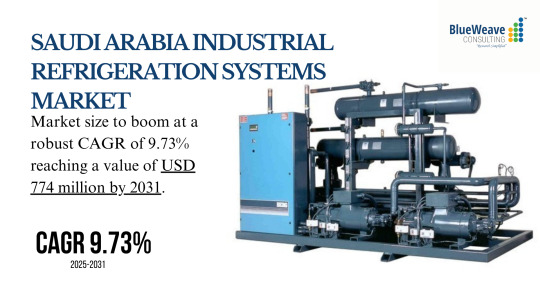
Saudi Arabia Industrial Refrigeration Systems Market size by value at USD 404.07 million in 2024. During the forecast period between 2025 and 2031, BlueWeave expects Saudi Arabia Industrial Refrigeration Systems Market size to boom at a robust CAGR of 9.73% reaching a value of USD 774 million by 2031. The growth of Industrial Refrigeration Systems Market in Saudi Arabia is propelled by the increasing global demand for systems utilizing natural refrigerants. These systems are essential for precise heat extraction in large-scale industrial processes, employing diverse condenser technologies—air-cooled, water-cooled, and evaporative—to achieve specified temperature parameters. Applications span critical sectors including cold storage, dairy and beverage processing, ice rinks, and heavy industry. System performance relies on controlled refrigerant evaporation and pressure modulation, facilitated by high-efficiency compressors. The selection of optimal refrigeration methodologies is contingent upon application-specific requirements, including temperature precision, operational range, and output volume, underscoring the need for tailored, high-performance solutions.
Sample Request: https://www.blueweaveconsulting.com/report/saudi-arabia-industrial-refrigeration-systems-market/report-sample
#BlueWeave#Consulting#Marketforecast#Marketresearch#ColdChainLogistics#RefrigerationMarket#SaudiArabiaMarket#IndustrialRefrigerationSolutions#RefrigerationTechnology#ColdChainManagement
0 notes
Text
Cold Chain Logistics Market Transforms Through AI Integration and Smart Temperature Monitoring Technologies
The cold chain logistics market is a critical segment within the global supply chain, ensuring temperature-sensitive goods are transported and stored under optimal conditions. This market plays a vital role in preserving the integrity of perishable products such as pharmaceuticals, food and beverages, chemicals, and biological materials. Driven by the increasing demand for fresh and frozen foods, biologics, and vaccines, the cold chain logistics industry is experiencing robust growth and technological transformation.

Market Overview
Cold chain logistics involves the transportation and storage of products that require a controlled temperature range throughout the supply chain. These logistics solutions include refrigerated transport vehicles, cold storage facilities, temperature monitoring devices, and warehouse management systems. The market has evolved rapidly over the past decade, fueled by globalization, rising health awareness, and growing demand for high-quality perishable goods across developed and developing economies.
The global cold chain logistics market was valued at over USD 250 billion in 2023 and is projected to grow at a compound annual growth rate (CAGR) exceeding 12% from 2024 to 2030. Key industries such as pharmaceuticals and biotechnology, where temperature integrity is crucial for product efficacy and safety, are significantly contributing to this expansion. Additionally, the rise of e-commerce and home delivery services for groceries and meal kits has accelerated the adoption of cold chain solutions.
Key Drivers
One of the primary growth drivers of the cold chain logistics market is the booming pharmaceutical and healthcare industry. Vaccines, biologics, and other temperature-sensitive drugs require strict cold storage and transportation standards. The COVID-19 pandemic highlighted the importance of cold chain systems for global vaccine distribution, setting a precedent for future preparedness.
Another major factor is the increase in international trade of perishable foods. Consumers are demanding fresh produce, seafood, dairy products, and meats regardless of season or geography. This demand has prompted food manufacturers and retailers to invest in robust cold chain infrastructure, ensuring food safety, compliance with international standards, and extended shelf life.
Technological advancements have further propelled the cold chain industry. Innovations in real-time temperature monitoring, data analytics, automation, and IoT (Internet of Things) devices enable precise control and visibility throughout the supply chain. These technologies help reduce waste, prevent spoilage, and ensure regulatory compliance, particularly in sectors with stringent safety requirements.
Regional Insights
North America and Europe currently dominate the cold chain logistics market due to their advanced infrastructure, high standards of food safety, and mature pharmaceutical sectors. The United States, in particular, is a global leader, with significant investments in refrigerated transport and storage facilities.
However, Asia-Pacific is emerging as the fastest-growing region, driven by rising disposable incomes, urbanization, and increased awareness of food and health safety. Countries like China and India are investing heavily in cold chain infrastructure to reduce food wastage and meet export quality standards. Government initiatives and private investments in cold chain development are helping bridge the supply-demand gap in these economies.
Challenges and Opportunities
Despite its growth, the cold chain logistics market faces several challenges. High operational costs, energy consumption, infrastructure gaps in emerging markets, and the need for trained personnel can hinder scalability. Additionally, compliance with international standards and regulations can be complex, especially for smaller players.
However, these challenges also present opportunities. The growing focus on sustainability is prompting the development of eco-friendly refrigeration technologies and energy-efficient transport systems. Companies that adopt green logistics practices stand to gain a competitive edge and meet the evolving demands of environmentally conscious consumers.
Public-private partnerships, infrastructure investments, and government policies supporting cold chain development are expected to address many existing barriers. For example, subsidies for cold storage units, tax benefits, and streamlined regulatory frameworks can encourage more businesses to adopt cold chain logistics solutions.
Future Outlook
The future of the cold chain logistics market is closely tied to innovation, collaboration, and regulatory evolution. As consumer expectations for quality, safety, and speed continue to rise, companies will need to integrate cutting-edge technologies and expand their cold chain networks globally.
The market will also see increased consolidation, with large logistics players acquiring specialized cold chain firms to enhance service offerings and geographical reach. Furthermore, the growing importance of digital solutions, such as blockchain for traceability and AI for predictive analytics, will redefine operational efficiencies in the years to come.
In conclusion, the cold chain logistics market is poised for sustained growth and transformation, driven by technological advancements, global trade expansion, and the critical need for reliable temperature-controlled logistics in healthcare and food sectors. With continuous investment and innovation, the industry will remain a cornerstone of global supply chain integrity.
0 notes
Text
Time Temperature Indicator Labels Market Drivers Boost Growth in Packaging and Supply Chain Monitoring
The time temperature indicator labels market is experiencing substantial growth as industries prioritize product safety, quality assurance, and traceability. These smart labels, which visually indicate whether a product has been exposed to temperature fluctuations over time, are becoming essential across various sectors including food and beverage, pharmaceuticals, and logistics. Several key drivers are accelerating the market expansion, reflecting a shift toward intelligent, sustainable, and consumer-trusted packaging solutions.

Rising Focus on Food Safety and Shelf-Life Management
One of the most significant drivers of the time temperature indicator labels market is the heightened focus on food safety. With global supply chains growing more complex, ensuring that perishable food items remain within safe temperature ranges is critical. Time temperature indicator labels help prevent food spoilage by providing clear visual cues when products have been stored improperly, thus reducing health risks and food waste. This visibility supports compliance with food safety regulations and builds consumer trust in product quality.
Retailers and manufacturers are increasingly adopting these labels to extend product shelf life, reduce recalls, and maintain brand reputation. As consumers become more aware of food safety, demand for packaging that offers real-time freshness insights continues to rise.
Pharmaceutical Industry’s Need for Cold Chain Integrity
Another major factor fueling the time temperature indicator labels market is the pharmaceutical industry’s reliance on cold chain logistics. Many medicines, especially vaccines, biologics, and other temperature-sensitive drugs, must be stored and transported under strict temperature conditions. Any deviation can compromise product efficacy or safety.
Time temperature indicators offer a reliable way to monitor temperature exposure during transit and storage, making them a vital component of pharmaceutical packaging. Regulatory bodies like the FDA and WHO recommend or mandate the use of such monitoring tools, further driving market growth in this segment.
Expansion of Global Supply Chains and E-Commerce
The growing globalization of supply chains and the surge in e-commerce are also contributing to the rise in demand for time temperature indicator labels. Products now travel longer distances across multiple climate zones, increasing the risk of temperature deviations. This is particularly relevant for perishable goods and pharmaceuticals, which require consistent environmental conditions throughout transit.
With real-time monitoring and visual indicators, these labels provide a simple yet effective solution for quality assurance in extended logistics networks. E-commerce platforms dealing with grocery, meal kits, and healthcare products are adopting these indicators to improve transparency and customer satisfaction.
Technological Advancements in Smart Packaging
Innovations in smart packaging technology are further enhancing the capabilities and applications of time temperature indicator labels. New developments include labels that can be customized to specific temperature thresholds, digital readouts, and integration with IoT systems for remote monitoring.
These advancements are making labels more accurate, cost-effective, and scalable for mass production. Smart packaging is gaining traction not only for its practical benefits but also for its ability to enhance brand value and user experience. As a result, manufacturers are increasingly investing in R&D to improve label performance and usability.
Environmental Concerns and Sustainability Initiatives
Sustainability is another important market driver. Traditional refrigeration and temperature control systems can be energy-intensive and costly. Time temperature indicator labels offer an environmentally friendly alternative by minimizing waste and enabling better inventory management.
Moreover, as companies adopt more sustainable practices, these labels help ensure that fewer products are discarded due to uncertainty about storage conditions. Their low energy use and minimal material requirements make them a favorable choice for businesses aiming to reduce their carbon footprint.
Regulatory Compliance and Industry Standards
Government regulations and industry standards play a significant role in shaping the time temperature indicator labels market. Regulatory bodies in food and healthcare sectors are increasingly mandating the use of temperature monitoring tools in supply chains. Compliance with these guidelines is not just a legal requirement—it’s also a market differentiator for businesses.
By incorporating time temperature indicators, companies demonstrate accountability and commitment to safety, which can influence purchasing decisions and strengthen customer loyalty.
In conclusion, the time temperature indicator labels market is driven by a combination of technological, regulatory, and consumer-related factors. As industries continue to prioritize safety, sustainability, and smart logistics, the demand for these labels is expected to grow steadily. Their ability to provide real-time, accurate, and easy-to-understand temperature data makes them indispensable in modern packaging and distribution processes.
0 notes
Text
Cold Storage Warehouse Sydney | Secure & Reliable Temperature-Controlled Solutions
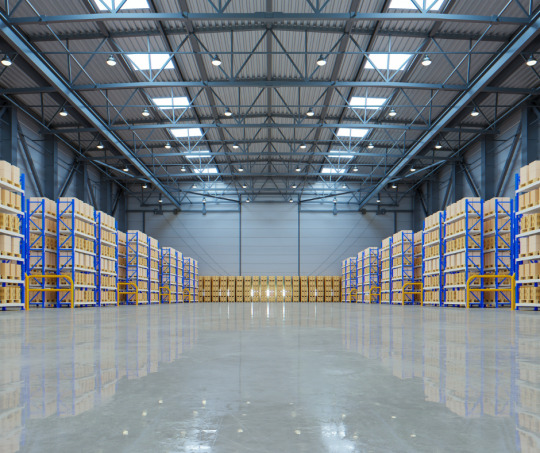
If you’re looking for a reliable cold storage warehouse in Sydney, Dardania offers the ideal solution. Our state-of-the-art facilities are designed to keep your perishable goods at optimal temperatures, ensuring freshness and quality throughout storage.
From food and beverages to pharmaceuticals and cosmetics, our cold storage services cater to various industries with strict hygiene and compliance standards. With 24/7 monitoring, temperature tracking, and advanced security, your inventory is always in safe hands.
Whether you require short-term or long-term storage, our flexible solutions are tailored to meet your business needs. We also offer seamless integration with our refrigerated transport services, allowing for smooth end-to-end cold chain logistics.
Partner with Dardania for trusted cold storage in Sydney. Contact our team today to find out how we can support your business.
#ColdStorageSydney#TemperatureControlled#RefrigeratedStorage#ColdChainLogistics#PerishableGoods#PharmaStorage#FoodStorageSolutions#WarehouseSydney#LogisticsAustralia#DardaniaLogistics#SupplyChainSolutions#ColdChainExperts
0 notes
Text
Truck Transportation Market Sees Growth Driven by E-commerce Demand
The truck transportation market encompasses the movement of goods and freight via road networks using various classes of trucks, trailers, and specialized carriers. These services offer flexibility, cost-effectiveness, and faster transit times compared to rail and maritime segments, making them a preferred choice for manufacturers, retailers, and logistics providers. With innovations in telematics, fleet management software, and eco-friendly fuel options, trucking companies are enhancing route optimization, safety, and fuel efficiency.
Get More Insights on Truck Transportation Market https://www.patreon.com/posts/truck-market-is-130257292

0 notes